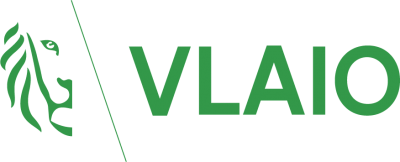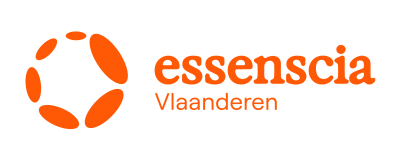Topics
We organise our actions in six thematic & strategic agendas:
Strategic Agendas:
Bio-economy
Circular Construction
Chemicals/Plastics
Manufacturing Industry
Food Chain
Water Cycles
Seven leverages provide additional support:
Leverage effects:
Lever Policy Instruments
Lever Circular Procurement
Lever Communication
Lever Innovation & Entrepreneurship
Lever Financing
Lever Jobs & Skills
Lever Research
What, why and how?
Why are we pursuing a circular economy?
Future visions 2050
How do we see our circular future?
About our management
Who steers what at Flanders Circular?
The value chain of duckweed
From water plant to protein
Flemish agriculture is struggling with a nutrient surplus that is causing environmental problems. The processing of these nutrients is a cost for the farmer, while these nutrients actually still have a value as a food source for biomass production.
Previous studies have already shown that duckweed, a free-floating aquatic plant, can grow on residual flows. Thus, duckweed has the potential to purify agricultural waste streams while producing proteins for the feed and food industry. Moreover, the local production of alternative proteins is very interesting because this important food source for humans and animals is currently still often imported from areas where tropical rainforest has to make way for crop production.
With this project, Inagro aims to create a value chain for duckweed so that a market can open for this circular product. Our focus is on processing duckweed into a stable marketable product in the food and feed industry. For this, we want to validate the technical and economic parameters on a relevant scale and focus on chain implementation in the sectors involved.
(1).jpg)
Inagro vzw
Partners Katholieke Hogeschool VIVES ZUID VZW, Ugent, Ivaco CVBA
Sectors
Themes
Organisations
Website
MOST IMPORTANT
RESULTS
- During the project, we set up a test facility for growing duckweed (140 m²) on a dilution of biological effluent. This resulted in 1,000 kg of fresh duckweed.
- We made a cost-benefit analysis of cultivating duckweed on effluent from pig manure treatment. In cooperation with UGent, we were able to process this duckweed profitably into feed pellets.
- We discovered the possibility of processing duckweed into a tasty burger suitable for human consumption. This burger would consist of 45% fresh duckweed and could be labelled as a 'source of protein'.
- Both government agencies and consumers are observing a trend in which meat consumption is decreasing and is being exchanged for vegetable-based alternatives. This project facilitates the introduction of a protein alternative into the feed and food market.
MOST IMPORTANT
LESSONS LEARNED
- For the processing of nutrient surpluses, food has the highest final value, followed by manure processing. However, the feed and energy value is much lower. Food applications seem profitable only if combined with manure processing. Human nutrition may be possible without that combination.
- The emissions from duckweed production are not yet fully known, but water lentils seem to be a sustainable source of protein. After all, the plant can produce high concentrations of protein in a surface-efficient manner. Thus, land-based crops no longer have to bear the rising demand for protein alone.
- The high water content of freshly harvested duckweed increases its perishability and transport costs. Partial drying or ensiling of the biomass are possibilities we can explore in the future.
- The complementary cooperation between the various partners is a real added value. For example, Inagro provided the know-how for the cultivation of duckweed, after which the cultivation took place at the IVACO pig farm. UGent processed the duckweed into a feed pellet and VIVES into a citizen.
WHAT DOES
THE FUTURE HOLD?
The pilot cultivation set-up remains in place and can still be useful for future initiatives. The reports of this project are also available digitally and can be consulted on request at Inagro vzw.
As a follow-up to this project, an LA project (VLAIO) was approved, with Flanders Food as the main applicant. The project, named LemnaPro, involves 18 companies, of which 10 are farmers. The focus of that project is on scaling up cultivation and determining the profitability in different cases, including food production in controlled conditions.
In addition, the Novel Food application for fresh duckweed will be evaluated in 2021. If duckweed is permitted as a 'novel food', this will open many new doors.
Our profitability analysis already has promising results and hopefully this can encourage farmers to invest. After all, this local value chain can reduce our protein imports and stimulate the reuse of nutrients from manure.

















